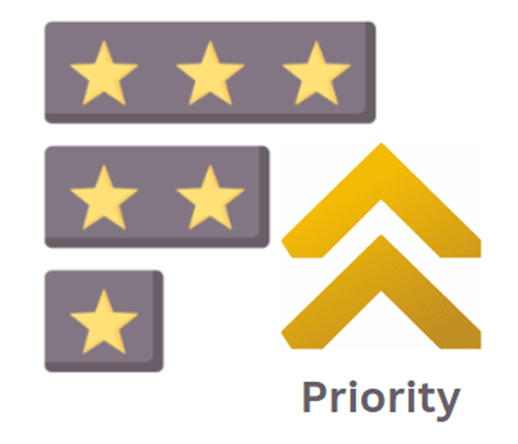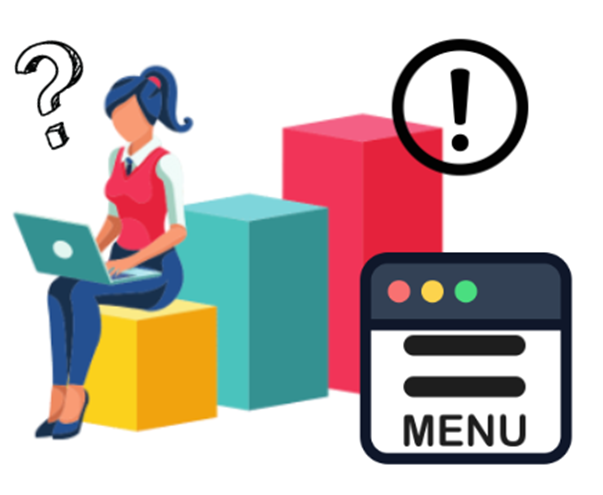
- SEO - Home
- SEO - What is SEO?
- SEO - Tactics & Methods
- SEO - On Page Techniques
- SEO - Off Page Techniques
- SEO - Web Site Domain
- SEO - Relevant Filenames
- SEO - Design & Layout
- SEO - Optimized Keywords
- SEO - Long-tail Keywords
- SEO - Title Tags
- SEO - Meta Description
- SEO - Optimized Metatags
- SEO - Optimize for Google
- SEO - Robots.txt
- SEO - URL Structure
- SEO - Headings
- SEO - Redirects
- SEO - Authority & Trust
- SEO - PDF Files
- SEO - Optimized Anchor
- SEO - Optimize Images
- SEO - Duplicate Content
- SEO - Meta Robots Tag
- SEO - Nofollow Links
- SEO - XML Sitemap
- SEO - Canonical URL
- SEO - Role of UI/UX
- SEO - Keyword Gap Analysis
- SEO - Get Quality Backlinks
- SEO - Adding Schema Markup
- SEO - Author Authority
- SEO - Fix Broken Links
- SEO - Internal Page Linking
- SEO - Clean Up Toxic Links
- SEO - Earn Authority Backlinks
- SEO - Core Web Vitals
- SEO - Update Old Content
- SEO - Fill Content Gaps
- SEO - Link Building
- SEO - Featured Snippets
- SEO - Remove URLS from Google
- SEO - Content is the King
- SEO - Verifying Web Site
- SEO - Multiple Media Types
- SEO - Google Passage Ranking
- SEO - Maximize Social Shares
- SEO - First Link Priority Rule
- SEO - Optimize Page Load Time
- SEO - Hiring an Expert
- SEO - Learn EAT Principle
- SEO - Mobile SEO Techniques
- SEO - Avoid Negative Tactics
- SEO - Misc Techniques
- SEO - Continuous Site Audit
- SEO - Summary
- SEO Useful Resources
- SEO - Quick Guide
- SEO - Useful Resources
- SEO - Discussion
SEO - First Link Priority Rule
For a long time, site programmers and search engine optimisation (SEO) professionals have debated and experimented with the notion of "First Link Priority" (FLP). However, pinpointing the precise date or person initially proposing the idea takes time and effort.
It is critical to understand that search engines such as Google employ complicated algorithms that consider several aspects when calculating the relevance and value of a web page. FLP is only one of several elements that might affect search engine results.
What Is the First Link Priority Rule?
First Link Priority is an internal linking notion that states that Google prioritises the anchor text of the first link referring to the same page. Earlier website links are considered more critical for SEO and help pages rank higher.
Google will only transfer link juice to the first link it finds on a page and disregard any others connecting to the same page.
In other words, when a search engine crawler explores one of the pages on the site and encounters two links heading to the same webpage, it will solely evaluate the anchor text for the first link and ignore the second.

What Are the Methods for Achieving First Link Priority?
There are several approaches to achieving first link priority.
Request that the site administrator or editor put your link first. This may be beneficial if you associate with the website's owner or editor or if the proposal is actually the most excellent alternative for their audience.
Link bait is another method for obtaining first link priority. The creation of content is so engaging that it compels other websites to connect to it. This can be challenging, but if accomplished, it can benefit your SEO.
Obtaining first-link priority might be a terrific approach to improving your SEO efforts.
How Does theLink Priority Function?
Link priority is an attribute for outbound links in your blog entries and articles. This is beneficial when connecting to a specific external resource you want your visitors to see first or when linking to a particular page on your site that you want to draw attention to.
To activate link priority, go to your blog or article's settings and look for the "Link Priority" option. Once turned on, any links you add to your blog entry or article will take priority over the rest of the links. Remember that this option only affects outbound links; links inside your blog post or article are unaffected.
What Are the Problems Faced with The Navigation Menu?
When inspecting the source code of a significant number of websites, the menu for navigation is situated atop the majority of content. As a result, spiders begin by exploring the navigation menu. This causes a problem because the majority of buttons for navigation in the menu do not employ properly optimised anchor text.
FOR EXAMPLE, if I offer office pens, I may have two separate buttons on my navigation menu, one labelled "Parker" and the other "Fountain." Those aren't the phrases I'm targeting, but "Parker office pens" and "Fountain office pens" don't always look nice in the navigation menu.
Many experienced SEOs have believed that Google will keep tracking the anchor text of an internal link inside the written material of a page. This, unfortunately, is not what is happening.

How To Put First Link Priority Into Action?
It would be best to consider a few factors to establish first link priority on your site. To begin with, you have to ensure that your website's structure allows Googlebot to scan and index your material quickly. This requires a well-organized sitemap as well as clear and succinct anchor language.
After optimizing your website for Googlebot, you can begin enforcing first link priority by including these lines of code in the robots.txt file −
User-agent: Googlebot
Allow: /
Sitemap: https://www.tutorialspoint.com/sitemap.xml
By including this code, you're informing Googlebot that it can browse and index your website's content. The sitemap directive instructs Googlebot wherein it can locate your website's sitemap, assisting it in understanding your site's structure. Lastly, the allow directive instructs Googlebot to prioritise your website's links over any additional links it discovers.
What Are the Methods for Avoiding the First Link Priority Rule?
There are several technological approaches to get around the first link priority constraints. Three of these are −
Insert the menu in your website's source code underneath the text
This might be a great choice if you've got a static website. It is feasible to insert a side navigation bar below the text in the source code using DIVs and absolute positioning. Google evaluates any anchor text inside the content first and counts the hyperlinks in the sidebar if there is none.
Remember that this is tough to achieve with a dynamic website or any site that uses a CMS. It necessitates the services of an astute developer since one minor change might jeopardize your website's absolute positioning.
Using hashtags for many internal links
A hashtag is a word used in a link to direct people to a specific section of a website. Because just a portion of a website may be helpful to a user who clicks on the hyperlink, Google evaluates a hashtag link as if it were a link to a different page and will analyze the anchor text of several links.
The hashtag workaround is effective even when the link does not take you to a specific website section.

Internal links only to in-depth pages
It is preferable to link internally to your site's inner pages rather than duplicate links to sites previously linked to.
This is arguably the most prevalent method, and you'll see it employed frequently by prominent news publications. The result represents a deep-linking approach that helps get deep pages viewed and indexed.
Does First Link Priority Affect Search Engine Ranking?
The answer is NO. Our first internal linking objective is to provide a smooth, straightforward user experience. Internal links assist visitors in moving around and navigating your website.
Any usefulness they might have had as hidden keyword cues to Google has long since died.
Regarding backlink strategy, it's far better to focus on providing content that people are inclined to link to rather than worrying about potentially wasting PageRank due to who links to you too frequently. This method will become more consistent with time.
The bottom line is that Google refuses to use first-link priority as a ranking indication in search results.
Conclusion
Employing first link priority can enhance your website's search engine visibility and rankings and organic search result click-through rate. If you want to optimise the website for search engines, first-link priority is an excellent place to start.